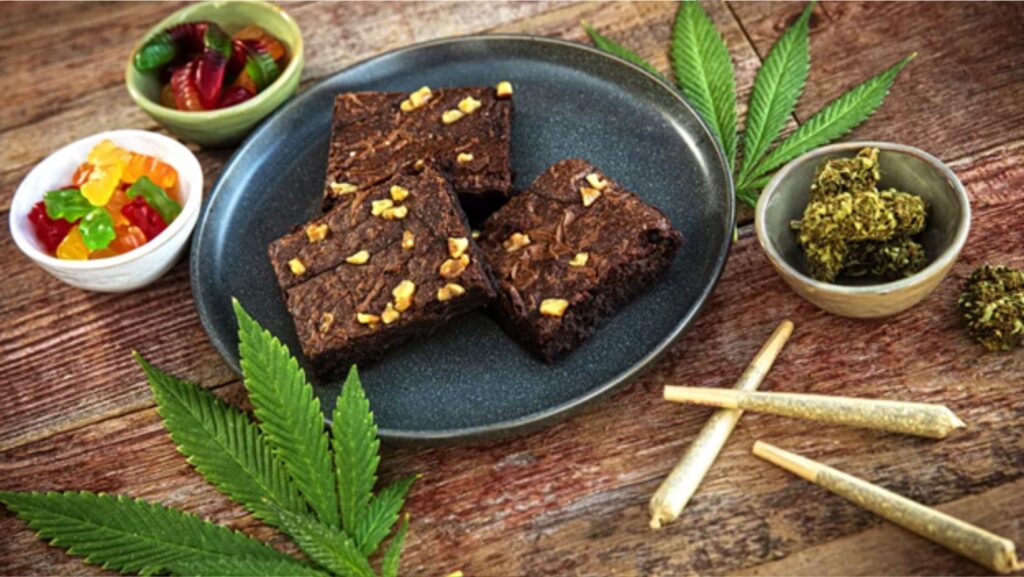
Making cannabis edible products legal is on the rise, and this has created a market for the products to grow. What used to be the preserve of only a few people is becoming more recognized by people as well as manufacturers who are interested in the possibility of the use of insects. Cannabis edibles are preferable to smoking since users can consume them anywhere and do not cause embarrassment. So, from gummies to gourmet dishes, the ability to infuse cannabis into food has opened up endless possibilities for creativity in the kitchen.
If you’re curious about where this edible revolution is headed, check out BC Weed Edible. Their unique combination of science expertise and a passion for cannabis is setting the stage for a delicious future in the cannabis industry.
Cannabis Compounds and Effects
Cannabis is a plant with various active compounds known as cannabinoids, where the main two are THC and CBD. THC is the component that produces the ‘high,’ while CBD has medicinal benefits such as relief for pain, stress, and anxiety.
THC and CBD, when ingested in edibles, are different from smoking in that they take about 30 minutes to 2 hours to kick in but last for 6-8 hours. THC found in the edibles causes more intensified feelings because the liver metabolizes it into 11-hydroxy-THC.

Alt text: Food Science Enhancing Edibles – How Cannabis Is Used?
THC, CBD, and other cannabinoids compose the “entourage effect,” a collective action. This interplay forms the basis of food science, which strives to design food effects and improve bioavailability.
Food Science Enhancing Edibles
Bioavailability describes the proportion of the active compounds that can be ingested and metabolized in cannabis edibles. Food sciences are crucial in amplifying the effectiveness of food products and making them reliable regarding potency.
Specialized encapsulation techniques are one of the facets. These methods include enclosing the cannabis compounds, like THC and CBD, within protective shells or nets. This encapsulation process:
- Preserves intact and maintains the potency of the compounds by preventing heat, light, and pH variation during processing and digestion.
- Enhances dissolution, thus enhancing absorption by the digestion system.
- It makes it easier for the substance to slowly release in the body, hence a sustained release effect.
Nanotechnology also improves bioavailability by reducing the size of cannabis particles to increase surface area. Different formulations, such as enteric coatings, ensure the drug reaches certain parts of the intestine for maximum impact.
Also, unlike synthetic ones, natural carriers such as fats and emulsifiers are employed to help enhance absorption. Advancements are resulting in cannabis edibles that have increased potency, quality, and flavors, which the consumer can enjoy.
Cannabis Extraction & Infusion
The improved methods of extraction have also enhanced food infusion with cannabis.

Alt text: Cannabis Extraction & Infusion in Food Sciences
The old-fashioned butter and oil processes are replaced with new procedures that enhance cannabinoid concentration and activity.
- Supercritical CO2 Extraction: This one is special as it is a solvent-less process that also results in very pure cannabinoids, ideal for use in edibles.
- Nanoemulsion Technology: Reducing the size of cannabis oil droplets increases the permeation rate and hastens the onset of effects.
- Encapsulation Methods: Capsules allow for accurate dosage and sustained release of supplementation.
- Molecular Infusion: Cannabis yields better taste and texture when directly infused at the molecular level.
- Advanced Emulsification: Technological advancements in emulsification techniques form stable, water-soluble cannabis for drinking.
All these techniques enhance the quality, uniformity, and variety of cannabis edibles.
Improving Flavor and Experience
Improving Flavor and Experience
Making palatable cannabis edibles was once a chore because of the overpowering ‘weed flavor,’ but this is no longer the case.
- Flavor Masking: Methods like encapsulation and nanoemulsions no longer mask the cannabis flavor, and edibles look like everyday snacks and candies.
- Novel Formats: Besides brownies, it is now possible to locate gummies, chocolates, chips, and so much more based on personal tastes.
- Beverages: Many cannabis-infused products include beverages, sodas, and teas since they can precisely dose properly.
- Gourmet Edibles: Chefs have prepared executive cannabis meals that utilize sous vide, which combines culinary professionality with marijuana infusing.
- Texture and Mouthfeel: From smooth ganaches to crispy snacks, advanced methods enhance the overall sensory experience.
Thanks to these innovations, cannabis edibles now deliver enjoyable flavors and textures, making them a mainstream food experience with controlled effects.
Nutritional Aspects and Health Benefits of Cannabis Edibles
There is an increasing trend in the use of cannabis edibles for their nutritional and medical qualities. Through companies like Kahnesia, food scientists have incorporated cannabis into superfoods, in effect providing potent edibles that contain vitamins, minerals, and antioxidants together with cannabinoids like THC and CBD.
These edibles – marijuana peanut butter, granola bars, and gummy worms – not only contain cannabinoids but also proteins, fats, and carbohydrates. They’re also being examined in medical nutrition therapy when correctly measured amounts can help relieve pain, increase appetite, or reduce nausea.

Alt text: Know About Nutritional Aspects and Health Benefits of Cannabis Edibles
Consuming cannabis with additional anti-inflammatory or antioxidant products such as supplement foods like turmeric or berries could improve consumption additional advantages. From the current developments in research, we can expect future consumption of cannabis edibles in both recreational and medical markets.
Novel Cannabis Food Products
The use of scientific research in the preparation of cannabis and food products has made edibles even better by adding more creativity.
Cannabis-Infused Beverages:
Seltzers and craft beers make these products versatile since the flavored bubbles conceal the presence of cannabis, appealing to different people.
Gourmet Cannabis Chocolates:
Artisanal chocolatiers are blending fine chocolates with precise doses of cannabis, creating luxurious treats.
Cannabis-Infused Condiments and Sauces:
Chefs are now using cannabis in oils, vinegar, and sauces to add flavor to their delicious meals.
Cannabis-Infused Baked Goods:
Chefs are creating various edibles in baked goods and sweets, such as brownies, and are considering niches in pathogen-free, vegetarian, and gluten-free baking.
Cannabis-Infused Meal Kits and Foods:
Ready-to-eat meals and a meal kit delivery service ensure cannabis-infused meals are easy to consume.
Cannabis-Infused Gourmet Dining:
Boutique eateries serve cannabis through pre-arranged multi-course ‘tasting menu’ dishes infused with culinary innovation.
These products are opening up options and creating a more unique and premium approach to cannabis edibles.











